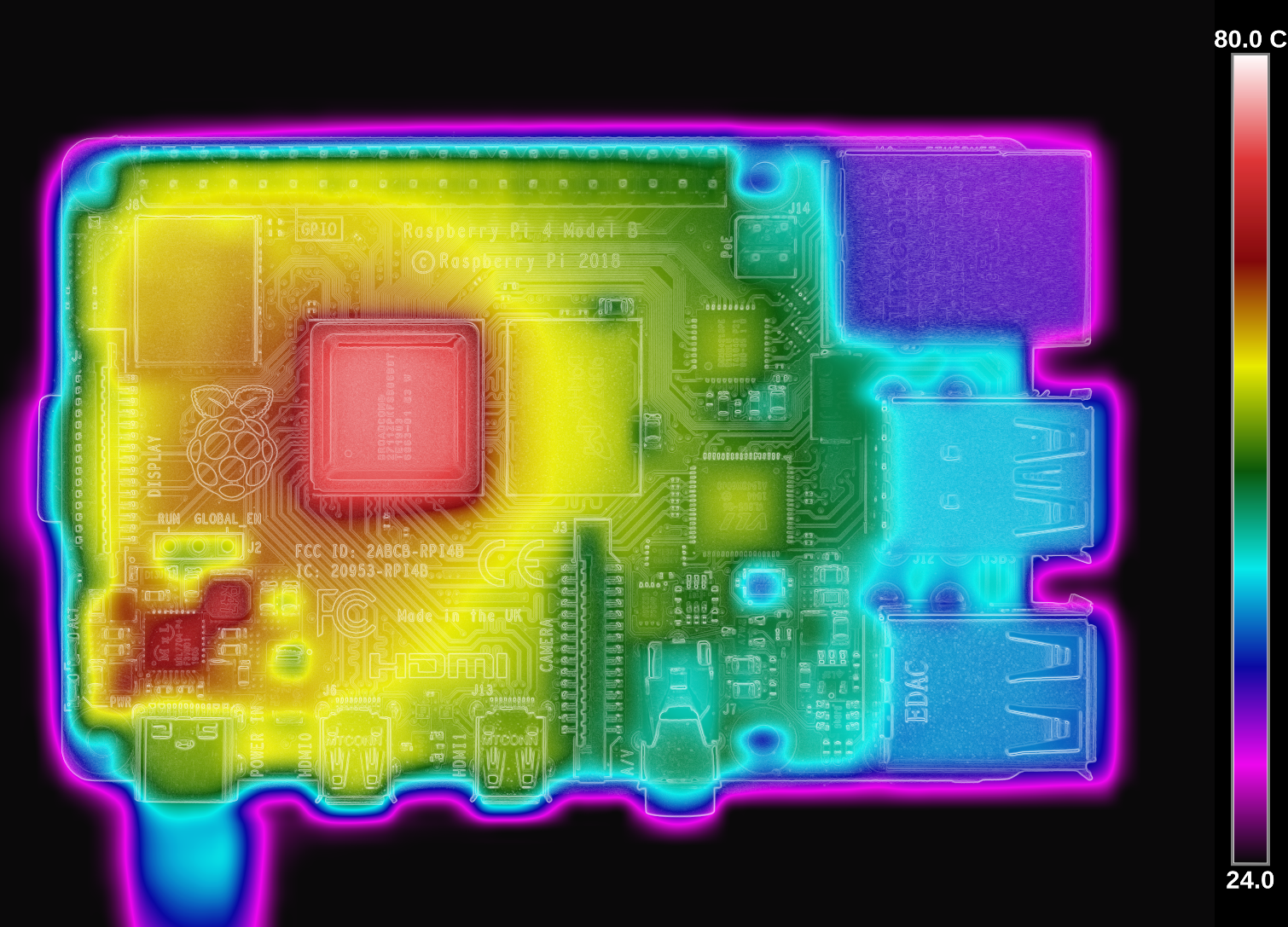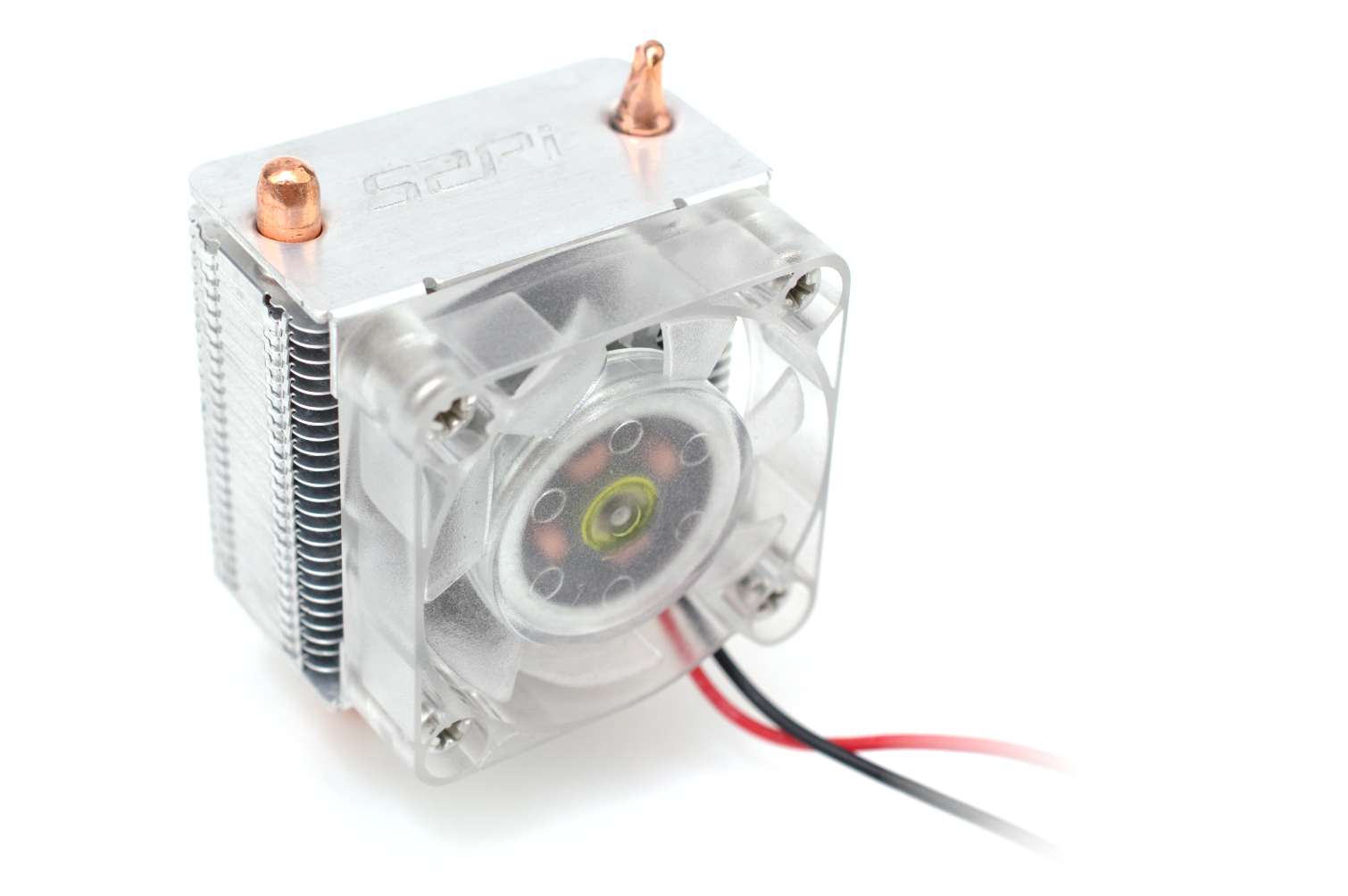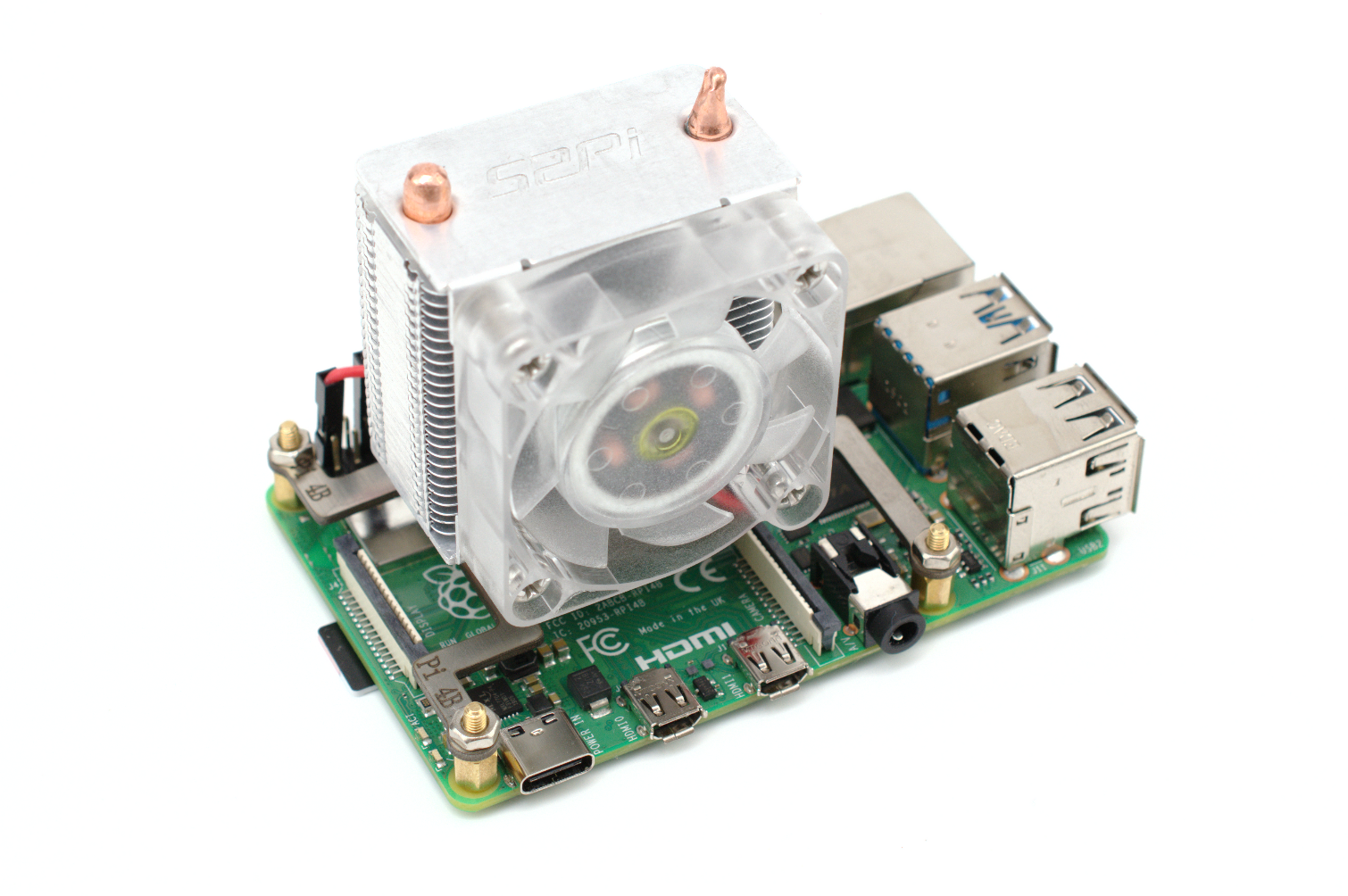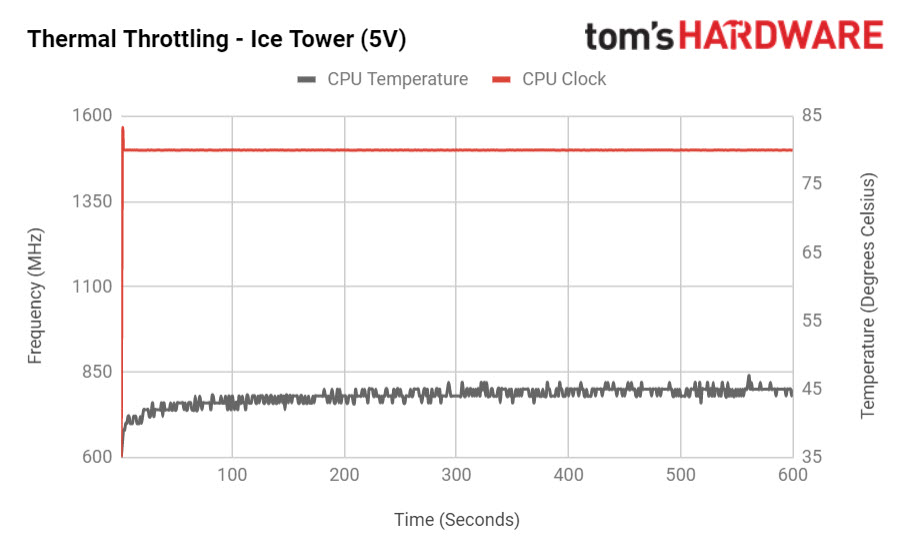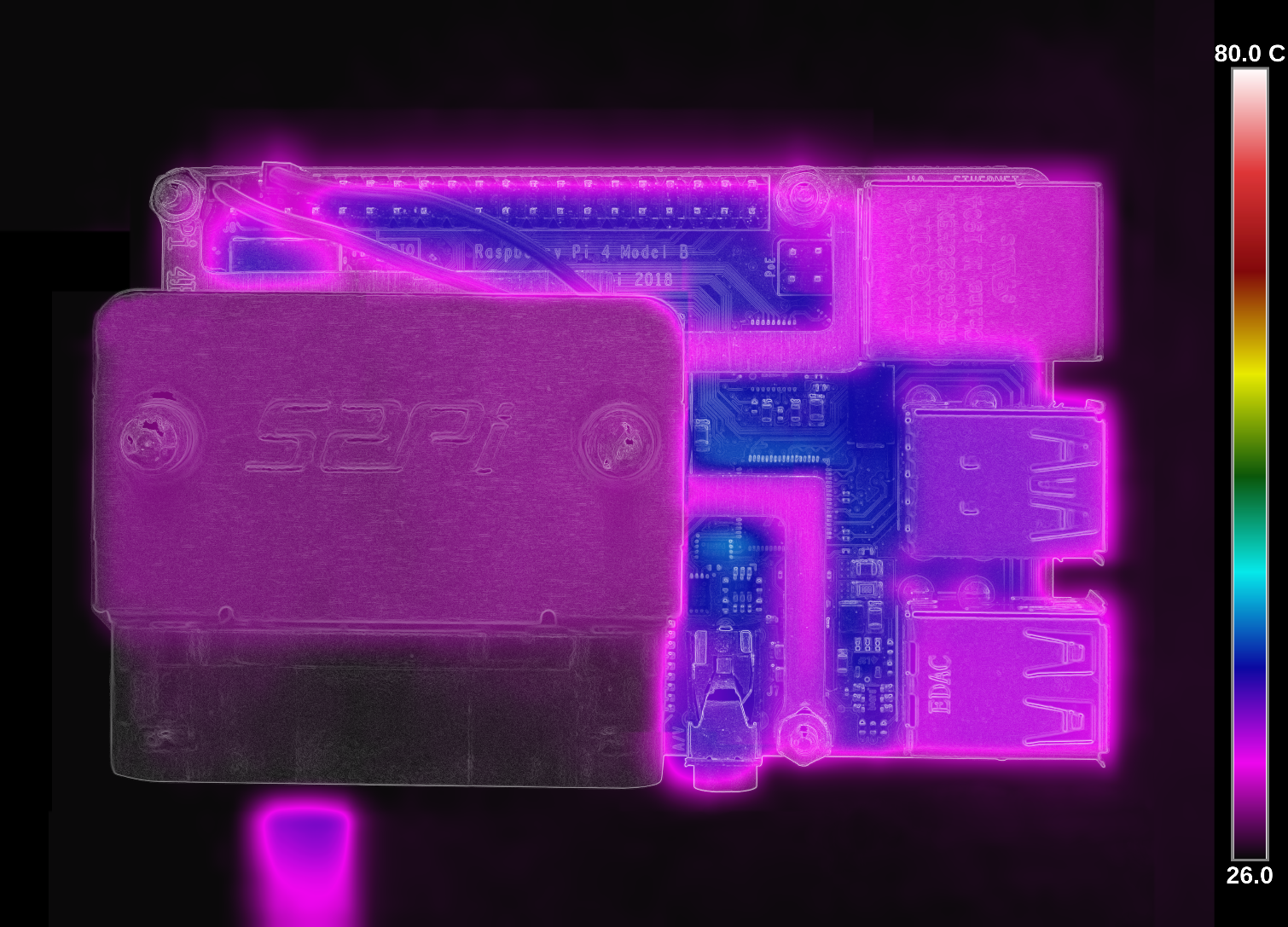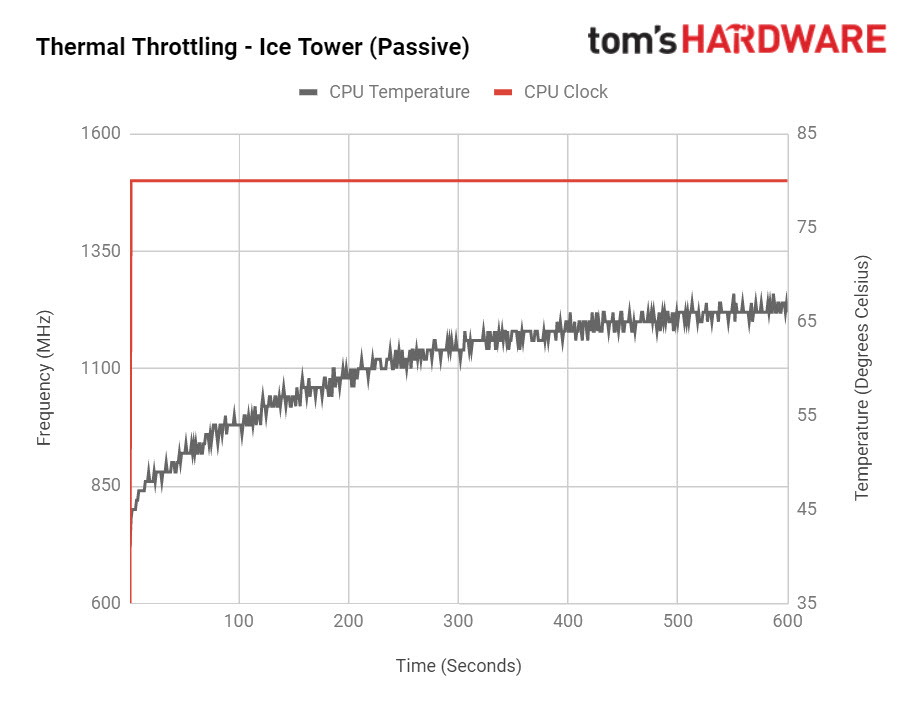52Pi Ice Tower Raspberry Pi 4 Cooler Review: Big Honking Fan
The Raspberry Pi 4 is an undeniable upgrade over previous Raspberry Pi computers in the performance stakes, but performance comes at a cost: increased power draw, and therefore increased heat generation from the BCM2711B0 SoC at its heart. Without some form of aftermarket cooling, thermal throttling occurs in as little as three and a half minutes.
Thankfully, the Raspberry Pi community is ready with solutions - such as the Pimoroni Fan Shim or wholly-passive Heatsink, both compatible with the company’s latest Pibow layered case design and with enough clearance to support the use of most Hardware Attached on Top (HAT) add-ons. Then there’s the Ice Tower, designed by 52Pi and sold via Seeed Studio, which is… well, we’ll get to that.
Taming the Heat
For many users, a Raspberry Pi 4 works perfectly well without any additional cooling. The problem comes when you’re running a workload which pegs the CPU and/or GPU for longer than around three and a half minutes. After that length of time, the SoC has reached its upper operating temperature of 80 degrees Celsius - at which point it will automatically down-clock to 1GHz from the stock 1.5GHz. If the workload continues, the SoC will continue to bounce between full- and reduced-speed operation until given a chance to cool back down.
To get sustained peak performance, the temperature of the SoC must be kept below 80 degrees Celsius. There are approaches to achieving this - if you rule out plunging it into mineral oil or pouring liquid nitrogen on top, anyway: forced convection, as with the Pimoroni Fan Shim, or increased surface area, as with the Pimoroni Heatsink. Then there’s the nuclear option: combining the two.
The Ice Tower Cometh
The 52Pi Ice Tower is inspired by the single-stack tower-style heatsink and fan (HSF) assemblies which dominate the desktop PC market. When unpacked from the box - which includes a trio of thermal interface material (TIM) pads, in case you need to remove it and reattach it again in the future, mounting brackets and accessories for the Raspberry Pi 4 and Raspberry Pi 3 Model B/Model B+, a tiny screwdriver, and a small but full-colour manual - it feels, in comparison to its desktop inspirations, absolutely tiny.
Once installed on a Raspberry Pi, though, the Ice Tower appears massive. Standing proud of the board by no less than 60mm, the Ice Tower includes a single 6mm diameter copper heatpipe bent into a U shape to pass through a 26-fin aluminium heatsink stack - though, as the slightly wobbly nature of the fins attests, it’s a simple friction fit. At the base of the U is an aluminium block which serves as the contact plate for the SoC it’s designed to cool, with the heatpipe making direct contact in the centre. To the front is a 40mm fan in transparent plastic, fitted - for some reason - with bright blue LEDs.
Installation itself is fairly straightforward: the two-piece mounting bracket is attached to the base of the heatsink with a pair of screws, then four mounting pillars attached to the Raspberry Pi. The heatsink and brackets are then lowered onto these pillars and secured with four small nuts before the two power cables for the fan - 5V and ground - are connected to the Raspberry Pi’s GPIO port. For those who want to use HATs, then, the Ice Tower isn’t an easy option: even if you are willing to use a cable to physically move the HAT out of the way of the comically tall Ice Tower, the power cable will get in the way unless you’re happy to splice it in manually.
Get Tom's Hardware's best news and in-depth reviews, straight to your inbox.
Out of the Box Performance
If you follow the instructions to the letter, the Ice Tower runs its fan from the Raspberry Pi’s 5V power supply via the GPIO header. There’s no software control; unlike the Pimoroni Fan Shim: the Ice Tower’s fan is active as long as the Raspberry Pi itself has power, and so are its surprisingly bright blue LEDs. The fan is configured, as is usual for tower-style coolers, to push air through the fin stack, and is clearly audible in use.
In a 28 degree Celsius ambient temperature, nearly four degrees hotter than the original test of a Raspberry Pi 4 without additional cooling, the Ice Tower has no trouble keeping the SoC cool: at no point, even towards the end of the run, does the SoC temperature - measured using an internal sensor - reach above 46 degrees Celsius. It’s a result even better than managed by the Pimoroni Fan Shim, which peaked just below 55 degrees Celsius in the same test. The LEDs in the fan, however, increase the Ice Tower’s power draw: the fan draws around 0.7W compared to the 0.6W of the Fan Shim, which has only a single user-programmable RGB LED.
A look at the Raspberry Pi 4 with Ice Tower fitted under a thermal imaging camera shows a dramatic difference to the same Raspberry Pi without aftermarket cooling. The entire board -- the parts of it that are visible under the bulk of the heatsink, anyway -- is visibly cooler, even though the airflow runs across the fin stack and never reaches the PCB. The message is clear: cool the SoC, the single largest heats source on the board, and you’re cooling the entire Raspberry Pi.
The Sound of Silence
While the Ice Tower’s fan isn’t massively loud, it can get a little irritating. There’s a quick solution: moving the red power cable from a 5V pin on the Raspberry Pi’s GPIO header to the 3V3 pin instead. Doing so reduces both the speed of the fan, and therefore its noise, and the brightness of the LEDs, at the cost of it pushing less air through the heatsink stack.
At 3.3V, the Ice Tower still handles the ten-minute CPU and GPU intensive test workload. Although temperatures are, unsurprisingly, higher than with the fan running at full speed, they never get above 50 degrees Celsius - well below the SoC’s throttle point.
For those who crave absolute silence, though, there’s another option: removing the fan altogether. It’s held onto the Ice Tower heatsink with four small screws, and can be quickly removed leaving behind only a set of mounting points which sit proud of the fin stack proper.
Avoiding throttling while cooling wholly passively isn’t easy: the Pimoroni Heatsink couldn’t manage it, though it tried bravely, with the first throttle operations recorded at around eight and a half minutes of sustained load. The Ice Tower, thanks to its dramatically greater surface area and overall mass, is a different story. Even with the fan removed, the Ice Tower kept the SoC well below the throttle point with a peak recorded temperature of 68 degrees Celsius. This impressive result suggests a passive Ice Tower could handle even extended sustained workloads, and on extended testing the SoC temperature, as measured using internal sensors, never reached higher than 70 degrees Celsius.
Bottom Line
The 52Pi Ice Tower is undeniably impressive, but it has its drawbacks. The loss of the GPIO header is a definite issue, as is the fact the size of the heatsink means you’re unlikely to squeeze the Raspberry Pi into any of the current cases on the market. At $19.90 from Seeed Studio, plus shipping from China until resellers abroad pick up stock, this is an expensive fan to put on a $35 computer.
The LED lights are an interesting choice, too: it would have been nice to be able to switch those on and off separate from the fan, and software control of the fan would have been an extra bonus.
There are few reasons to choose the 52Pi Ice Tower over the Pimoroni Fan Shim, which also keeps a Raspberry Pi 4 cool enough to avoid thermal throttling, even when overclocked, but costs half the price and leaves room for you to use most HATs and cases.
If all you’re concerned about is having the best cooling performance possible, there’s little to match the 52Pi Ice Tower. Even the most sustained of workloads won’t give it cause to break a sweat, and there’s enough headroom to handle an overclocked Raspberry Pi 4 or a warmer operating environment. And if you want quiet operation, the heatsink with the fan detached is good enough to prevent throttling.
Image Credits: Gareth Halfacree
Editor's Note: An earlier version of this article stated that, over a long enough time period, throttling was inevitable when using the Ice Tower in passive mode; extended testing has shown that this is not the case, and in an open air environment the Ice Tower will prevent throttling even on multiple-hour workloads.
MORE: All Raspberry Pi Content
MORE: Raspberry Pi Projects and Guides
-
BulkZerker Watching all these cooling solutions for the Pi4 come out makes me wonder what kind of chipset/ram heatsinks would fit on it.Reply -
Giroro Honestly, the fun of getting creative with the cooling is part of why I want a Pi 4 in the first place.Reply
I'm still really curious to how The Pimoroni Heatsink performs when it uses thermal compound instead of the thermally insulating tape that they used.
I'm a little suspicious they deliberately nerfed the cooling on that $3 heatsink on purpose, in order to sell fan shims....
It really shouldn't be that hard to passively cool <10 watts. How does this ice tower cooler perform without the fan on? It seems like a relatively neat way to add a heat pipe.
BulkZerker said:Watching all these cooling solutions for the Pi4 come out makes me wonder what kind of chipset/ram heatsinks would fit on it.
I hear some m.2 cooling will fit without much effort -
King_V ReplyGiroro said:How does this ice tower cooler perform without the fan on? It seems like a relatively neat way to add a heat pipe.
They addressed that in the article.
The Ice Tower, thanks to its dramatically greater surface area and overall mass, is a different story. Even with the fan removed, the Ice Tower kept the SoC well below the throttle point with a peak recorded temperature of 68 degrees Celsius. This impressive result suggests a passive Ice Tower could handle even extended sustained workloads, though eventually the laws of physics suggest it too will begin to throttle without forced convection from a fan.
-
Giroro ReplyKing_V said:They addressed that in the article.
oh haha. I guess I skimmed it too quickly -
King_V Reply
No worries, I've done that more times than I'd care to admit.Giroro said:oh haha. I guess I skimmed it too quickly -
Giroro I don't agree with the idea that passive cooling is destined to eventually throttle without a fan, because physics.Reply
In a perfectly sealed case, maybe.. but not with ventilation. -
King_V Yeah, that it seemed to be leveling out on the graph suggested that it would continue to keep things at 70 or below.Reply
Maybe that part of the comment was a little bit of hedging bets, a sealed or maybe poorly ventilated case, different ambient temperatures (say, if you live in India vs if you live in Finland), etc.
